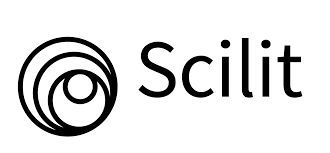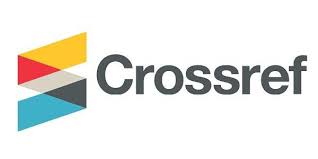GREEN BANKING, KEPEMILIKAN ASING, PROFITABILITAS, FIRM SIZE, PENGARUHNYA TERHADAP FIRM VALUE
DOI:
https://doi.org/10.25170/wpm.v15i2.5042Keywords:
Green banking, foreign ownership, profitability, firm size, firm valueAbstract
In general, practices that support the economic environment such as Green banking can escalate a company's performance from point of view the investors, consumers and the third party related communities, which in turn can contribute to increasing firm value. However, the effects may vary depending on industry sector, regulations and market response. Foreign ownership can affect company value depending on whether foreign investors provide more confidence or actually cause volatility due to potential policy changes. A high profitability is usually associated with good performance and can increase a firm value. Company size, in some cases, can be an indicator of a company's strength, and a larger size can provide an advantage or disadvantage in terms of bargaining power, sustainability, and access to resources. The sample of this research examines financial (banking) companies from 2019-2022 listed in Indonesia Stock Exchange, with a total sample of 166 firm years. This research concludes that profitability has a significant positive influence on firm value and firm size has a significant negative influence on firm value.
References
Abdullah, M. H. S. B., Janor, H., Hamid, M. A., & Yatim, P. (2017). The effect of enterprise risk management on firm value: Evidence from Malaysian technology firms. Jurnal Pengurusan, 49, 3–11. https://doi.org/10.17576/pengurusan-2017-49-01.
Abukosim., et al. 2014. Ownership Structure and Firm Values: Empirical Study on Indonesia Manufacturing Listed Companies. Journal of Arts, Science & Commerce Vol.V Issue 4. ISSN: 2231-4172.
Agustina, L., & Baroroh, N. (2016). The Relationship Between Enterprise risk management (ERM) And Firm Value Mediated Through the Financial Performance. Review of Integrative Business and Economics Research, 5(1), 128. http://buscompress.com/journal-home.html.
AL-Najjar, D. (2015). The Effect of Institutional Ownership on Firm Performance: Evidence from Jordanian Listed Firms. International Journal of Economics and Finance, 7(12), 97. https://doi.org/10.5539/ijef.v7n12p97.
Anggraini, D., Aryani, D. N., & Prasetyo, I. B. (2020). Analisis Implementasi Green banking dan Kinerja terhadap Profitabilitas Bank di Indonesia.
Bose, S., Khan, H. Z., Rashid, A., & Islam, S. (2018). What drives Green banking disclosure? An institutional and corporate governance perspective.
Buckby, S., Gallery, G., & Ma, J. (2015). An Analysis of Risk Management Disclosures: Australian Evidence. Managerial Auditing Journal, 30(8–9), 812–869.
Brigham, E. F., & Houston, J. F. (2019). Fundamentals of Financial Management (15 ed.). Boston: Cengage Learning
Berzkalne, I., & Zelgalve, E. (2014). Intellectual Capital and Company Value. Procedia - Social and Behavioral Sciences, 110, 887-896.
Chai, H, dan Liu, Q. 2010. Competition and Corporate Tax Avoidance: Evidence from Chinese Industrial Firms. www.ssrn.com.
Comitee of Sponsoring Organizations of The Treadway Commission (COSO). 2004. Enterprise risk management Integrated Framework. Retrieved from September 2022 from https://www.coso.or/documents/coso-erm-executive- summary.pdf.
Desender, K. A., & Lafuente, E. (2011). The Influence of Board Composition, Audit Fees and Ownership Concentration on Enterprise Risk Management. SSRN Electronic Journal. https://doi.org/10.2139/ssrn.1495856.
Dharwal, & Agarwal. (2013). Green banking: An innovative initiative for sustainable development. ACCMAN Institute of Management Article, 2(3).
Dowling, J. & Pfeffer, J. (1975). Organisational Legitimacy: Social Values and Organisational Behavior. Pacific Sociological Review, 18(1), 122–136.
Dwiastuti, D. S., & Dillak, V. J. (2019). Pengaruh Ukuran Perusahaan, Kebijakan Hutang, dan Profitabilitas Terhadap Nilai Perusahaan. Jurnal ASET (Akuntansi Riset), 11(1), 137-146.
Fides Alfida Pamungkas, Anita Wijayanti, Rosa Nikmatul Fajri. (2020). Pengaruh Struktur Aset, Ukuran Perusahaan, Profitabilitas Terhadap Nilai Perusahaan. Journal of Economic, Public, and Accounting (JEPA) ISSN Online 2623-2472 Vol 2 No. 2 April 2020, hlmn. 86-102 ISSN Cetak 2715-8977
Gani, L., & Jermia, J. (2006). Investigating the effect of board independence on performance across different strategies. The International Journal of Accounting, 41, 295–314.
Ghozali, I. (2020). 25 Grand Theory. Semarang: Yoga Pratama.
Giner, B., Allini, A., & Zampella, A. (2020). The Value Relevance of Risk Disclosure: An Analysis of the Banking Sector. Accounting in Europe, 17(2), 129–157. https://doi.org/10.1080/17449480.2020.1730921.
Gita, R. D., & Yusuf, A. A. (2019). Pengaruh struktur modal, ukuran perusahaan dan profitabilitas terhadap nilai perusahaan (studi empiris pada sektor pertambangan yang terdaftar di Bursa Efek Indonesia periode 2013-2017). Indonesian Journal of Strategic Management, 2(1).
Gittman, & Zutter. (2015). Principle of Mana- gerial Finance (13th ed.). Pearson.
Handajani, L. (2019). Corporate Governance dan Green banking Disclosure: Studi pada Bank di Indonesia. Jurnal Dinamika Akuntansi Dan Bisnis, 6(2), 121–136. https://doi.org/10.24815/jdab.v6i2.12243.
Haryono, S. A., Fitriany, & Fatima, E. (2017). Pengaruh Struktur Modal dan Struktur Kepemilikan terhadap Kinerja Perusahaan. Jurnal Akuntansi Dan Keuangan Indonesia, 14(2), 119–140.
Hermiyetti, & Katlanis, E. (2016). Analisis Pengaruh Kepemilikan Manajerial, Kepemilikan Institusisonal, Kepemilikan Asing, dan Komite Audit terhadap Kinerja Keuangan Perusahaan.
Hernawati, E., & Jannah, L. (2021). Konsep Green Marketing dan Dampaknya terhadap Perilaku.
Hilal, A., & Samono. (2019). Analysis of the Effect of Company Micro Fundamental Factors on Company Value in Companies Listed in LQ 45 Index. International Journal of Economics and Financial Issues, 9(4),115-118
Hutchinson, M., & Gul, F. A. (2004). Investment opportunity set, corporate governance practices and firm performance. Journal of Corporate Finance, 10, 595–614. https://doi.org/10.1016/S0929-1199(03)00022-1.
Kamaruzaman, S. A., Ali, M. M., Ghani, E. K., & Gunardi, A. (2019). Ownership structure, corporate risk disclosure and firm value: A Malaysian perspective. International Journal of Managerial and Financial Accounting, 11(2), 113–131. https://doi.org/10.1504/IJMFA.2019.099766.
Karyani, E., & Obrien, V. V. (2020). Green banking and Performance: The Role of Foreign and Public Ownership. Jurnal Dinamika Akuntansi Dan Bisnis, 7(2), 221–234. https://doi.org/10.24815/jdab.v7i2.17150.
Khamis, R., Hamdan, A. M., & Elali, W. (2015). The Relationship between Ownership Structure Dimensions and Corporate Performance: Evidence from Bahrain. Australasian Accounting, Business and Finance Journal, 9(4), 38–56. https://doi.org/10.14453/aabfj.v9i4.4.
Khrawish, H.A. (2011). The Impact of E-Banking on Bank Profitability: Evidence from Jordan.
King, M. R., & Santor, E. (2008). Family values: Ownership structure, performance and capital structure of Canadian firms. Journal of Banking and Finance, 32(11), 2423–2432. https://doi.org/10.1016/j.jbankfin.2008.02.002.
Kurniawati, & Biduri, S. (2018). Apakah Ukuran Perusahaan, Media Exposure dan Profitability Berpengaruh Terhadap Carbon Emission Disclosure? Seminar Nasional and The 5th Call for Syariah Paper.
Kusumadewi, N.L.G.L. and Wardhani, R. (2020) ‘The effect of three types of agency problems on the firm performance: evidence from Indonesia’, Int. J. Monetary Economics and Finance, Vol. 13, No. 3, pp.279–286.
Lin, Y. R., & Fu, X. M. (2017). Does institutional ownership influence firm performance? Evidence from China. International Review of Economics & Finance, 49, 17–57. https://doi.org/10.1016/j.iref.2017.01.021.
Mardiana, Endah, P. P., & Dianata, A. W. M. (2018). The Effect of Risk Management on Financial Performance with Good Corporate Governance as a Moderation Variable. Management and Economics Journal, 2(3), 257–268. www.bi.go.id.
Mas’ud, M. (2008). Analisis faktor-faktor yang mempengaruhi Struktur Modal dan Hubungannya terhadap Nilai Perusahaan. Jurnal Manajemen dan Bisnis, 7 (1), 146-162.
Mayangsari, R. (2018). Pengaruh Struktur Modal, Keputusan Investasi, Kepemilikan Manajerial, dan Komite Audit terhadap Nilai Perusahaan Sektor Aneka Industri yang Listing di Bursa Efek Indonesia Periode 2012-2016. Jurnal Ilmu Manajemen, 6(4), 477–485. www.idx.co.id.
García Meca, E.; Sanchez Ballesta (2011): “Does ownership structure monitor analyst forecast accuracy?”Journal of International Accounting Auditing and Taxation, 20, 73-82
Mustofa, U. A., Edy, R. N. A. P., Kurniawan, M., Kholid, M. F. N. (2020). Green Accounting Terhadap CSR pada Bus di Indonesia dengan Kinerja Keuangan Sebagai Variabel Intervening. Jurnal Ilmiah Ekonomi Islam.
Nahar, S., Azim, M., & Jubb, C. A. (2016). Risk disclosure, cost of capital and bank performance. International Journal of Accounting and Information Management, 24(4), 476–494. https://doi.org/10.1108/IJAIM-02-2016-0016.
Nath, V., Nayak, N., & Goel, A. (2014). Green banking Practices - A Riview.
Ni, Y., Huang, P., Chiang, P., & Liao, Y. (2019). Cash flow statements and firm value: Evidence from Taiwan. The Quarterly Review of Economics and Finance, 71, 280-290.
Panda, B., & Leepsa, N. M. (2017). Agency theory: Review of Theory and Evidence on Problems and Perspectives. Indian Journal of Corporate Governance, 10(1), 74–95. https://doi.org/10.1177/0974686217701467.
Perdana, V. A., & Septiani, A. (2017). Pengaruh Corporate Governance terhadap Kinerja Keuangan.
Prasetyanto, Pramundityo., Chariri, Anis. 2013. Pengaruh Struktur Kepemilikan dan
Kinerja Intellectial Capital Terhadap Nilai Perusahaan. Diponegoro Journal of Accounting Volume 2, Nomor 2, Hal. 1-12. ISSN: 2337.3806.
Porter, M. (1990). The Competitive Advantage of Nations.
Pouraghajan, A., Malekian, E., Emamgholipur, M., Lotfollahpour, V., & Bagheri, M. M. (2012). The relationship between Capital Structure and Firm Performance Evaluation Measures: Evidence from the Tehran Stock Exchange. International Journal of Business and Commerce, 1(9), 166-181.
Purwohandoko. (2017). The Influence of Firm's Size, Growth, and Profitability on Firm Value with Capital Structure as the Mediator: A Study on the Agricultural Firms Listed in the Indonesian Stock Exchange. International Journal of Economics and Finance, 9(8), 103-110.
Rajput, N., Arora, S., & Khanna, A. (2013). An Empirical Study of Impact of Environmental Performance on Financial Performance in Indian Banking Sector. International Journal of Business and Management Invention ISSN, 2, 19–24. www.ijbmi.org
Sheikh, N. A. (2011). The impact of internal attributes of corporate governance on firm performance, 38–55. https://doi.org/10.1108/10569211311301420.
Sri, S., & Nuryazid. (2019). “Pengaruh Direktur Asing, Komisaris Asing, dan Kepemilikan Asing terhadap Kinerja Perusahaan (Studi Empiris Pada Perusahaan Manufaktur Yang Terdaftar Di Bei Periode 2014-2017).” E-Jurnal Akuntansi Vol 2, 1–11. http://eprints.ums.ac.id/73372/
Solikhah, B., Wahyudin, A., Yulianto, A., & Fathudin, M. I. (2018). Carbon Emission Disclosure on Manufacturing Compaies in Indonesia. Proceeding of International Conference: 3rd SHIELD, 178–184.
Sulistyawati, S. N., & Suryani, A. W. (2022). Achieving Operational Efficiency through Risk Disclosure. Asian Journal of Business and Accounting, 15(1), 149–178. https://doi.org/10.22452/ajba.vol15no1.5.
Tobin, J. (1969). A General Equilibrium Approach To Monetary Theory. Journal of Money, Credit and Banking, 1(1), 15-29.
Utamaningsih, A., Tandelilin, E., Husnan, S., & Santoso, A. R. (2013). Asymmetric Information in the IPO Underwriting Process on the Indonesia Stock Exchange: Pricing, Initial Allocation, Underpricing, and Price Stabilization. Journal of Indonesian Economy and Business, 28(3), 311–321.
Wardhana, L. I., & Tandelilin, E. (2011). Institutional ownership and agency conflict controlling mechanism. Journal of Indonesian Economy and Business, 26(3), 389 – 406.



